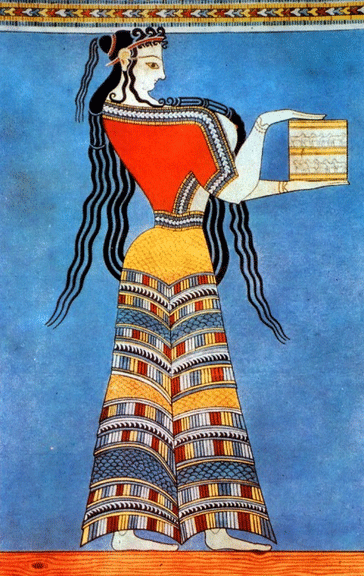The star blazed and glittered “like the most beautiful and glorious torch ever seen when driven by a strong wind.”
Thus exclaimed Johannes Kepler when, on the night of 17 October 1604, he saw a brilliant new star shining in the heavens in the foot of the Constellation of the Serpent-Bearer (Ophiuchus). That brightest of stars -- now known to have been a supernova -- is marked N in the lower centre of Kepler's sky chart (below).
The supernova appeared in the sky not long after a rare conjunction between the planets Jupiter and Saturn which, for the first time in 800 years, came together in one of the five fiery signs, in this case Sagittarius. When Mars then moved closer to Jupiter, the planets and the supernova formed a heavenly triangle. A fiery triangle within a fiery astrological sign.
Johannes Kepler (1571-1630) was in Prague serving as Imperial Mathematician and court astrologer to the Holy Roman Emperor Rudolf II. He charted the new star over the course of many months (except when it was too close to the sun to be seen by the naked eye), making his last observation a year later, after which the nova faded from view.
Kepler believed that the new star was a portent, “an exceedingly wonderful work of God.” He also believed it was connected to astrological forces -- not the power of the zodiac, to be sure -- but in a kind of dynamic force emanating from the sun that kept the planets in motion. The planets, in turn, exchanged this nebulous force among themselves -- rather like magnets attracting and repelling -- which is how other planets could influence events on earth. In 1606, Kepler published De stella nova in Pede Serpentarii (On the New Star in the Foot of the Serpent-Bearer), arguing that there was a direct correlation between the new star and the great conjunction of Jupiter and Saturn. Such conjunctions were always potent signs for astrologers and thus, with the brilliant new star bursting onto the scene as well, it must have been especially charged with astrological significance. Accordingly, Kepler predicted nothing less than the downfall of Islam and the return of Christ.
Yet his true Eureka! moment was not very far.

As a devout Lutheran, Kepler was deeply interested in Biblical chronology, not doubting, for example, that the earth had been created in 4,000 BC -- his starting point for calculations of heavenly movements throughout history. Now, Kepler calculated that an equally rare 'greater conjunction', also later joined by Mars, had also taken place in the year 7 BC. Surely, this conjunction was of the greatest astrological significance! But what? By remarkable chance, the Polish Jesuit historian, Laurentius Suslyga, had just published a tract which argued that the reckoning of the start of the Christian era (and thus all Anno Domini dates) was in error by four years. Christ was born not in 1 AD but in 4 BC.
Eureka!
For, if the author is correct, in order to reckon the Age of Christ, four years must be added to the Epoch of Christianity now in use It would follow, therefore, that Christ was born one or two years after the great conjunction of the three superior Planets in the first part of Aries or in the end of Pisces, occurring for the sixth time since the foundation of the world. Hence, the star which led the Magi to the manger of Christ, if it occurred two years before the birth of Christ, could be compared to our star.The triple conjunction of the planets, thus, was the harbinger of the Star of Bethlehem just as, in his own day, an identical heavenly configuration had called forth Kepler's new star. He assumed that his brilliant nova had the same relationship to the planetary conjunction in 1604 as had a portentous 'new star' in 7/6 BC, but that earlier star was the true Star of Bethlehem that led the Magi to the Christ child.
The Magi were of Chaldea, where was born astrology, of which this is a dictum: Great conjunctions of planets in cardinal points, especially in the equinoctial points of Aries and Libra, signify a universal change of affairs; and a cometary star appearing at the same time tells of the rise of a king.... Granted, then, that the new star of the Magi was first seen not only at the same time as Saturn and Jupiter were beheld in each other's vicinity, namely in June BC 7, but also in the same part of the sky as the planets .... what else could the Chaldeans conclude from their, and the still existing, rules of their art [of astrology] but that some event of the greatest moment was imminent?Concerning the True Year in which the Son of God assumed a Human Nature in the Uterus of the Blessed Virgin Mary
Kepler published his work on chronology and the year of Jesus's birth in 1614: De Vero Anno quo Aeternus Dei Filius Humanam Naturam in Utero Benedictae Virginis Mariae Assumpsit (English title above). In it Kepler demonstrated that the Christian calendar was in error by five years, and that Jesus had been born in 4 BC, a conclusion (as we are told by the authoritative Galileo Project) that is now universally accepted.*
It had come about like this: Christ was conceived about the time that the major planets were in conjunction with the sun. The Magi arrived in Jerusalem in February 5 BC to see for the second time (as recounted in Matthew 2,9-10) the star which they had seen for the first time in 7 BC (Matthew 2,2).
What Wise Men Saw
The Star of Bethlehem could not have been the conjunction in and of itself. No matter how close together two planets come, even if they eventually partially overlap, no Wise Man would mistake them for a single star. While watching, he would have seen them coming together and, a few nights later, he'd see them separating. Anyway, in 7 BC (as more recent and accurate reckoning has shown), Saturn and Jupiter never appeared to have approached each other more closely than a distance double that of the apparent diameter of the moon. Worse still, while Saturn, Mars, and Jupiter did form a triangle in the sky towards the end of February 6 BC, Saturn and Mars, at least, were too close to the sun to be seen with the naked eye. By the time all three were visible in the morning sky, they had already moved apart considerably.
At The Fount of Astrology
As it happens, Babylonian astrological records exist for the crucial year, four copies, in fact, of a so-called 'Almanac' covering the Seleucid Era year 305 = 7/6 BC. This means we have an extremely detailed set of observations and mathematical calculations for the prediction of astronomical movements from Babylonia -- a centre of astronomy and astrology in the Seleucid and Parthian periods -- which was also, according to some versions of the story, the home town of the journeying Magi. In short, these cuneiform records were written at the right time and in the right place. There is no doubt that the Babylonians would have been aware of the approach of a conjunction and would have been able to estimate its date within a few days. While the almanac covers the period of the closest approaches of Jupiter and Saturn, the tablets do not allude to these conjunctions.
No conjunction, no unusual heavenly activity.
This rather party-pooping report, of course, does not take into account the miraculous nature of the star itself: "This star was not of the ordinary run of comets or new stars," said Kepler, "but by a special miracle moved in the lower layer of the atmosphere." Really, I have to admit that the miraculous option is the only one left. The magic pointing finger created it, as Kepler thought, putting a star between Jupiter and Saturn when they were already fairly close.
... there shall come a star out of Jacob, and a Sceptre shall rise out of Israel.
Numbers 24.17.
Have a very happy winter solstice however you celebrate it.
I wish all my readers the best of health and most interesting of work in 2015.
* Not so fast, Galileo. 'Universal' apparently doesn't mean everyone. In my opinion, there's still plenty of play room between 8 BC and 4 BC if we want all the stories to fit. It largely depends on when Herod died (the Massacre of the Innnocents has to take place when Christ is two years old), when Christ began preaching -- O lots of things. Maybe that will be next year's Christmas post.
This is not the first time Zenobia has written about aspects of some Christmas stories. See The Magi and Christmas , We Twelve Kings of Orient Are, and Whose Christmas Is It Anyway?
Sources
I have made much use of the excellent discussion by Rahlf Hansen, Kepler and the Star of Bethlehem; W. Burke-Gaffney, S.J., Kepler and the Star of Bethlehem; A. J. Sachs & C.B.F.Walker, Kepler's View of the Star of Bethlehem and the Babylonian Almanac for 7/6 B.C., Iraq 46/1, 43-55; and William Eamon's blog, Kepler and the Star of Bethlehem. Other sources include The Galileo Project: Johannes Kepler; D. Hayton, Kepler on supernova, theology and astrology PACHS 2009; Robert S. Westman, Johannes Kepler (Encyclopaedia Britannica); and (last but not least), the witty and wise M. Gardner, The Star of Bethlehem, Skeptical Inquirer 23.6 (1999).
Illustrations
Top: Artwork from De Stella Nova showing the Constellation Ophiuchus with the 1604 supernova marked 'N' in the Serpent-Bearer's foot, as observed by Kepler.
Above left: Portrait of Johannes Kepler, Photo credit: Wikimedia
Below left: Kepler and Solar System (http://cosmologybus.typepad.com/cosmology_bus/johannes-kepler/)Photo via Connor from Victoria, Canada, Science Hero: Johannes Kepler.
Lowest left: Late Babylonian cuneiform tablet from Babylon (?). British Museum 35429 obverse. Photo via Sachs & Walker (sources, above).








































